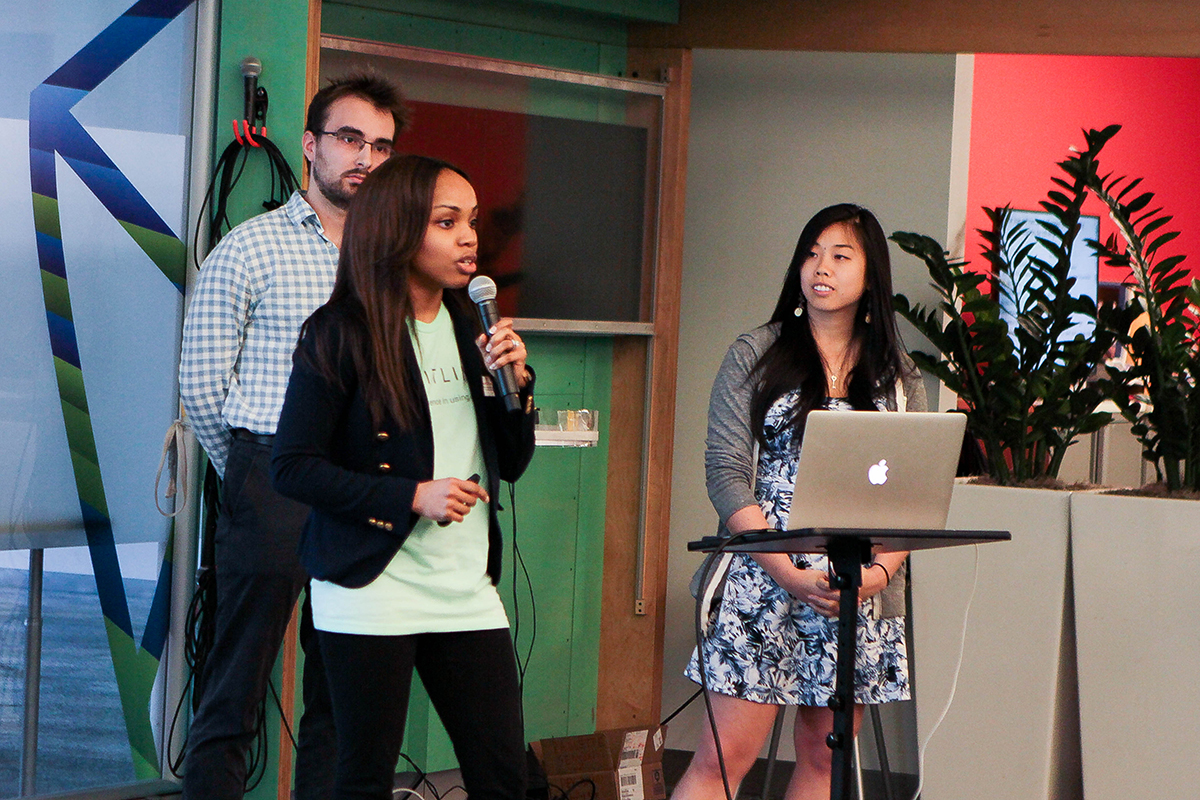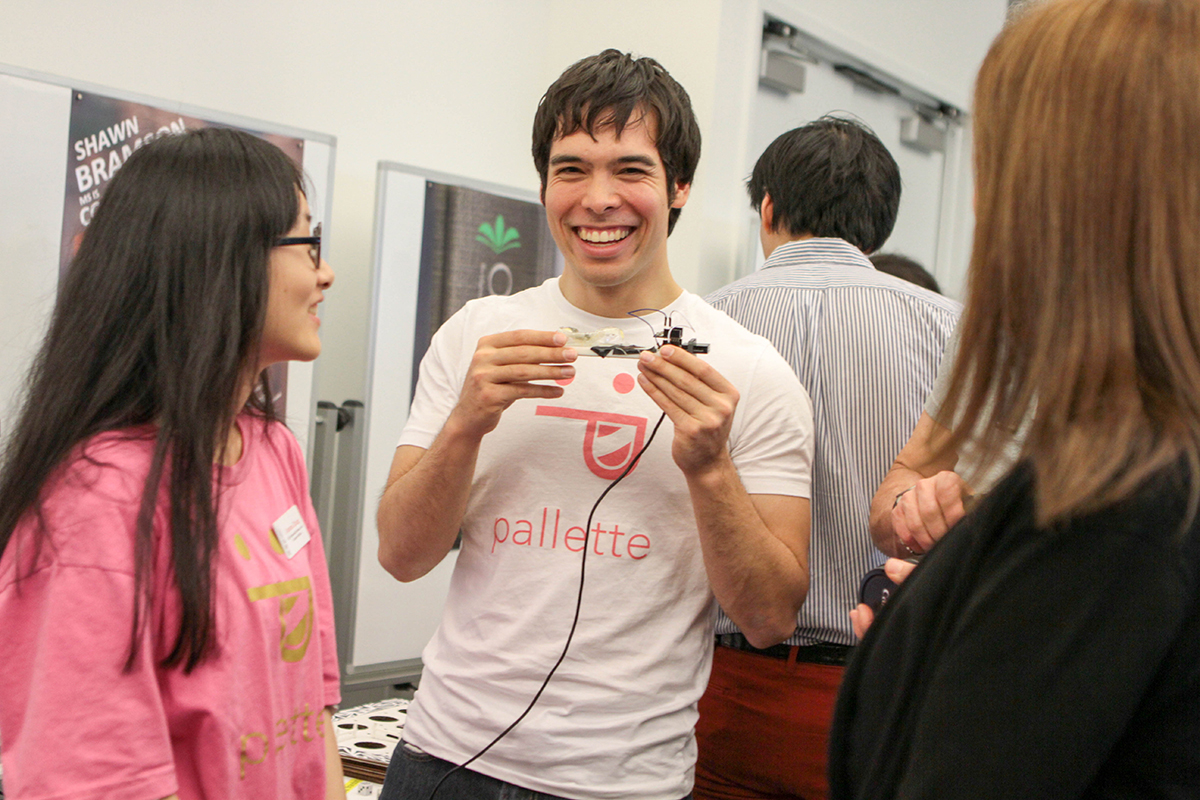Cornell Tech Open Studio brims with cutting-edge ideas
By Jon Craig

In three years, Cornell Tech’s popularity and ingenuity has grown exponentially.
The Manhattan-based school’s success is never more apparent than at its semester-ending program called Open Studio, at which students, Ph.D.s and postdocs present ideas for apps, startup businesses and other inventions.
And with each successive year, attendance at the presentations has doubled. There were about 350 people at the latest Open Studio May 20 at Google’s New York offices – temporary home to Cornell Tech until its permanent campus opens next year on Roosevelt Island.
Founding Dean Dan Huttenlocher encouraged Cornell students and guests to look for the Cornell Tech campus rising on New York’s horizon – noting that 10 stories of one 26-story structure has already been built. It is the first of three new Roosevelt Island buildings set to open in 2017, he said.
“This is the end of our third full academic year here,” Huttenlocher said. “It’s hard for me to imagine that, but it’s true.”
Huttenlocher said 100 of Cornell Tech’s 150 graduate students would receive degrees this spring, and the college will have more than 200 students enrolled next fall.
“The numbers are less important than the kinds of people we’re attracting,” Huttenlocher said.
Huttenlocher said the campus is also enjoying great success with faculty hiring this spring – and will essentially double the number of tenure-track faculty members next year – up to about two dozen faculty members.
During the presentations, innovations that wowed the audience included “Pallette,” a device that fits into the mouth like a dental retainer and can be operated by movements of the tongue. Designed for someone who is paralyzed or mobility impaired, the device can be used to operate wheelchairs, robots or most other equipment controlled by wireless signals. The prototype was produced for under $100, according to connective media master’s students Shawn Bramson, Oliver Hoffman, Rohit Jain, Dan Levine and Joanna Zhang.

A plug-and-play solution called “Bowtie” – from students Kate Bodden (MBA), Ron Fisher (MBA), Vivek Sudarsan (M.Eng in computer science) and Mike Wang (M.Eng in CS) organizes a user’s apps so that all daily tasks – such as ordering food, a sports ticket or something on eBay – can be streamlined into simple text messages.
Doctoral student Rahul Chatterjee designed an automatic software tuning tool that allows typos in computer passwords – within a certain range as not to breach system security – to save employers’ time in lost work or efforts resetting employees’ passwords.
Meanwhile, “Brohan,” a startup company composed of computer science master’s students Johan Adami, Brunno Attore and Bill Marino, aims to take advantage of internet users’ increased viewing of online video (now estimated to average two hours daily). They designed technology to embed advertisements into the surfaces and backgrounds of digital videos.
RoboTC, a project by computer science master’s students Yang Hu and Wilson Pulling, is designed to enhance intelligence for robots such as Sphero, a Parrot drone or Roombas. It currently uses an external attachment, but the Cornell Tech students are close to developing an internal chip.
Finally, “Thread,” a data collection and sharing platform conceived by MBA and computer science students Greg Brill (MBA) and Sam Raudabaugh (M.Eng), was designed for autism teachers who might be overwhelmed by the volume of information collected on paper by hand while observing students. As a central database, the information can be shared with other teachers and parents.
Jon Craig '80 is a journalist based in Westchester County, New York.
Media Contact
Get Cornell news delivered right to your inbox.
Subscribe